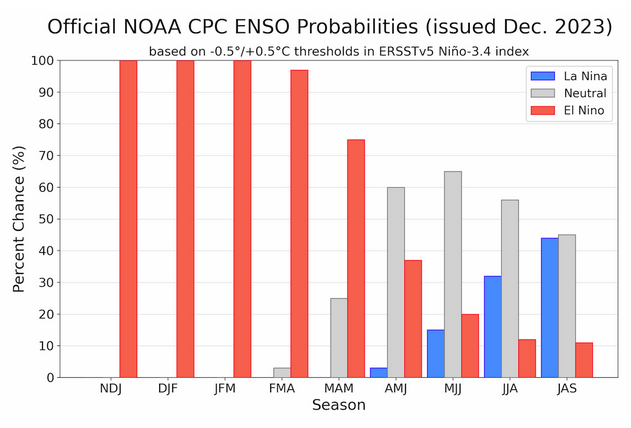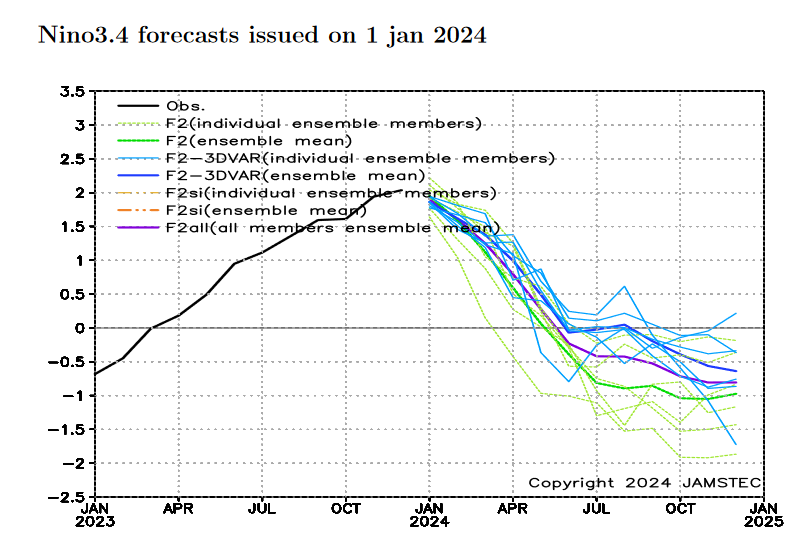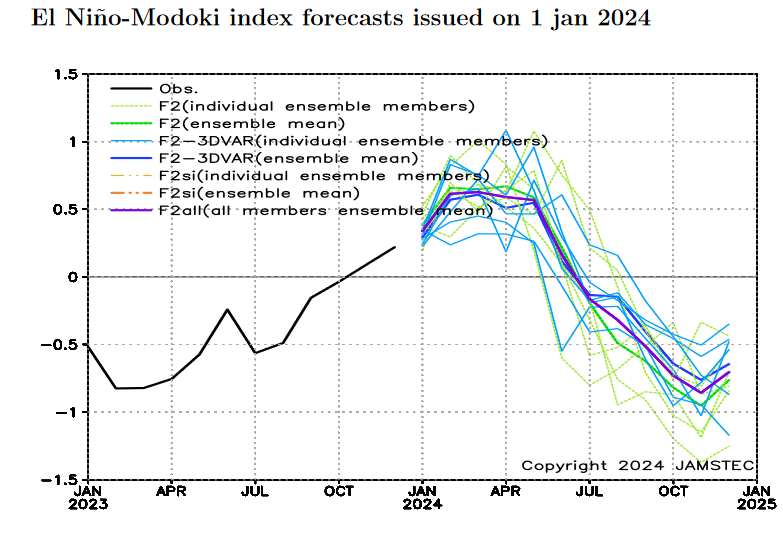On the second Thursday of every month, NOAA (really their Climate Prediction Center CPC) issues its analysis of the status of ENSO. This includes determining the Alert System Status. NOAA again describes their conclusion as “ENSO Alert System Status: El Nino Advisory”
There is not much doubt that we have an El Nino. How long it lasts and its strength remains to be seen. This El Nino has not become a Historical El Nino. We will try to address the slight confusion of when the El Nino will end in this article.
We have included some very interesting graphics from and a link to an interesting ENSO Blog article by Emily Becker.
CLIMATE PREDICTION CENTER ENSO DISCUSSION

| The second paragraph is what is important:
“The most recent IRI plume indicates El Niño will gradually weaken and then transition to ENSO-neutral during spring 2024 . Some state-of the-art dynamical climate models suggest a transition to ENSO-neutral as soon as March-May 2024. The forecast team, however, delays this timing and strongly favors a transition to ENSO-neutral in April-June 2024. There are also increasing odds of La Niña in the seasons following a shift to ENSO-neutral. It is typical for El Niño to peak in December/early January, but despite weakening, its impacts on the United States could last through April (see CPC seasonal outlooks for probabilities of temperature and precipitation). In summary, El Niño is expected to continue for the next several seasons, with ENSO-neutral favored during April-June 2024 (73% chance). Below is the middle paragraph from the discussion last month. ” The most recent IRI plume favors El Niño to continue through the Northern Hemisphere winter 2023-24. Based on the latest forecasts, there is now a 54% chance of a “historically strong” El Niño during the November-January season (³ 2.0°C in Niño-3.4). An event of this strength would potentially be in the top 5 of El Niño events since 1950. While stronger El Niño events increase the likelihood of El Niño-related climate anomalies, it does not imply expected impacts will emerge in all locations or be of strong intensity (see CPC seasonal outlooks for probabilities of temperature and precipitation). In summary, El Niño is expected to continue through the Northern Hemisphere winter, with a transition to ENSO-neutral favored during April-June 2024 (60% chance;).” |
We now provide additional detail. The level of uncertainty with respect to how this El Nino will play out has increased quite a bit.
CPC Probability Distribution
Here are the new forecast probabilities. The probabilities are for three-month periods e.g. DJF stands for December/January/February.
Here is the current release of the probabilities:
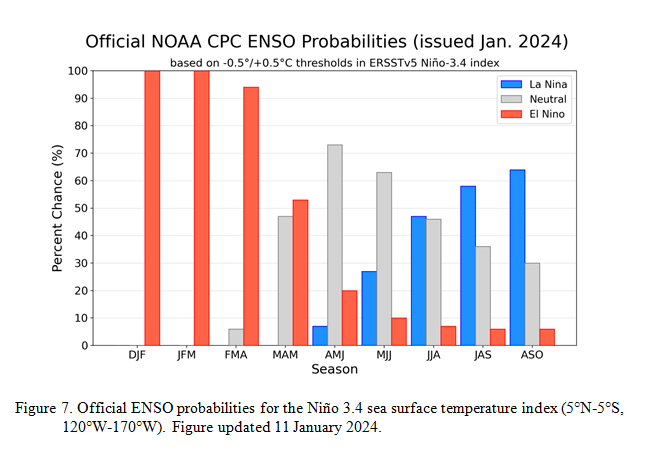
| This chart shows the forecasted progression of the evolution of ENSO from the current El Nino State to Neutral and by the summer to La Nina. |
Here is the forecast from late last month.
| The analysis this month and last month are different. This month the probability of El Nino in MAM is much less than was expected last month. That is important. |
What Does the NOAA Proprietary ENSO Model Forecast?
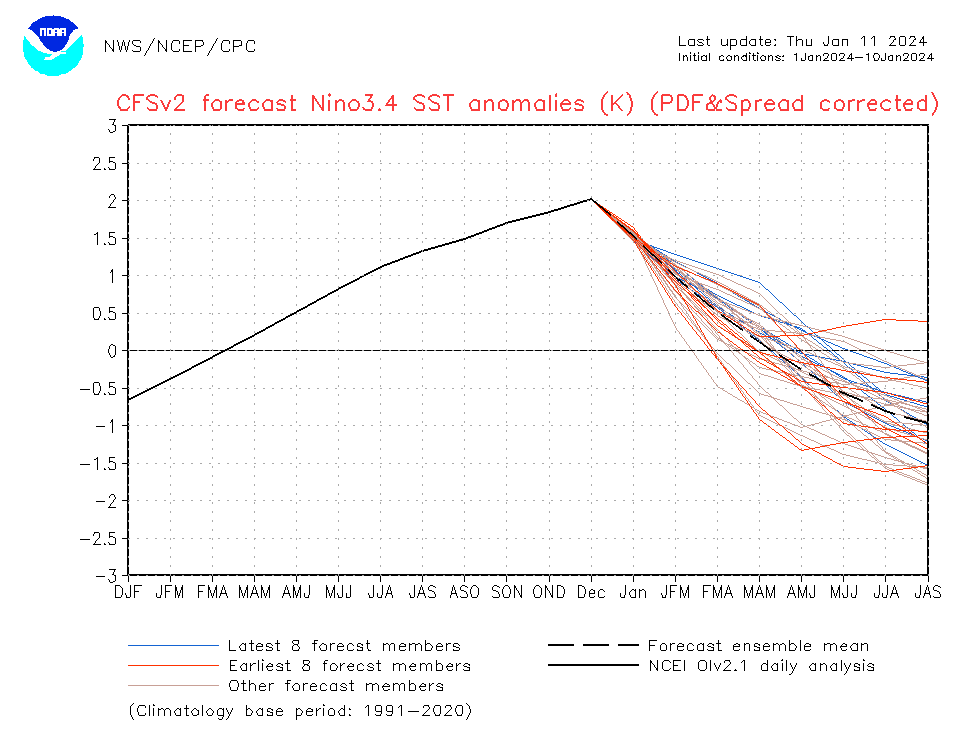
| This seems off. But there is an explanation even if NOAA CAN NOT FIGURE IT OUT. We will discuss that later in the article. If you want to see an updated version you can view an updated version by clicking HERE. So this is very different from the official CPC forecast and seems quite odd actually. But again we will discuss that later. |
View of other Models.
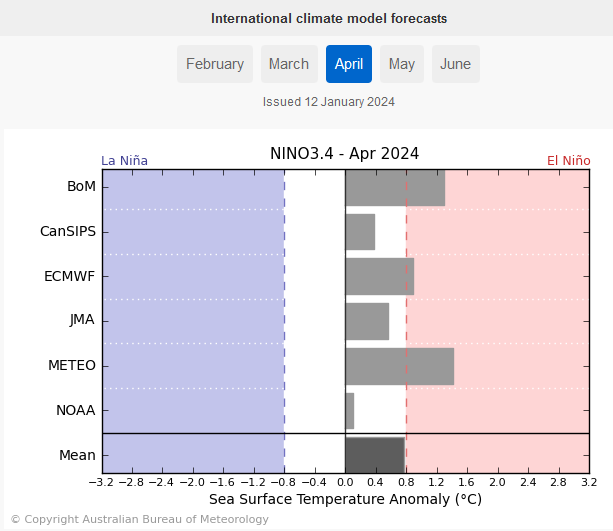
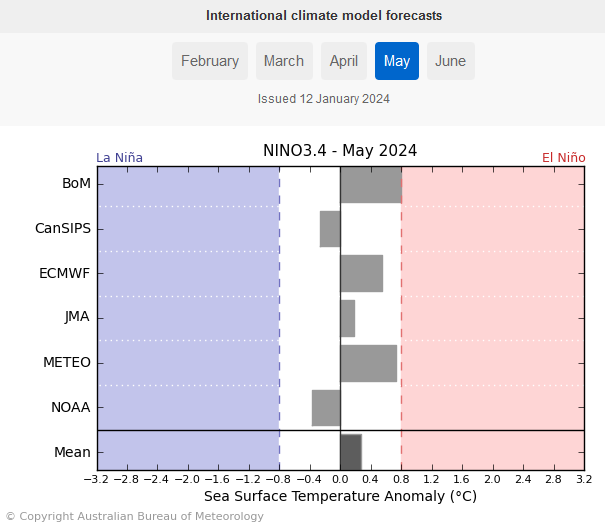
| The NOAA proprietary model forecast for the timing of the decline of the NINO 3.4 Index is now much quicker than the others in this small collection of model results prepared by the Australian Bureau of Meteorology. However, NOAA does not rely on that model and uses a different approach. Notice the forecasted rapid drop off of the Nino 3.4 Index through April and May of 2024. I do not think this El Nino will end up being in the top 5 El Ninos since 1950. I think it is slightly overrated but we will see. |
But I also have the JAMSTEC forecasts.
| Notice the standard Nino 3.4 Index ends the El Nino (index drops below +0.5C) in May but there is a steep decline from now to then. The Modoki Model also ends in May but it shows a lower intensity all along. I think that is what has NOAA perplexed. As the El Nino has more Modoki characteristics the closer we get to May, I think NOAA will have difficulty with their Outlooks. But the dynamic models may handle it fine but statistical models would not IMO. May is far enough out that NOAA will probably be using a blend of the dynamic and statistical models in what they issue next Thursday. |
Looking at Actual Current Conditions.
NOAA reports some derived data that describes the current situation and a forecast. But what if we want to form our own opinion? After all, meteorologists are looking at the actual current situation and making predictions.
This shows the current actual situation for the surface of oceans. To update this graphic click HERE.
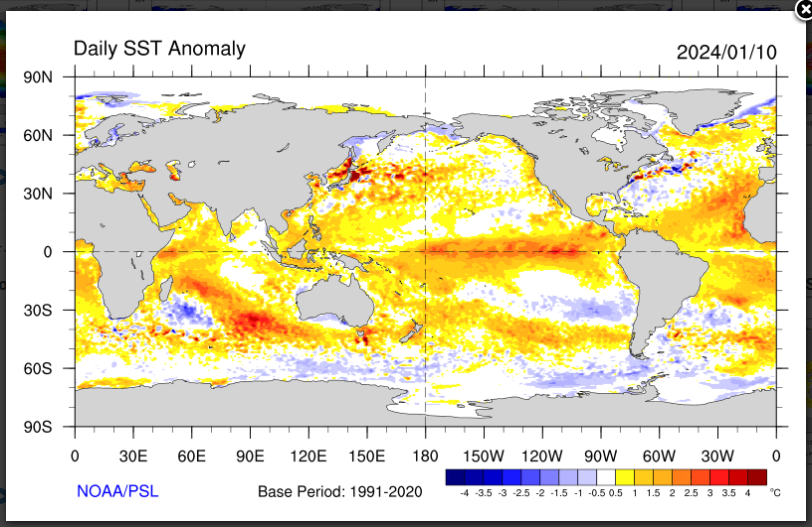
| You can see the warm tongue of water extending from Ecuador and Peru. The cold currents moving up the western side of South America are strong this month. We are discussing ENSO tonight but you can see a lot of interesting things here. It is only a one-day snapshot so keep that in mind. There is not much warm water along any coast of the United States. |
Putting the historical information in motion. Updates can be found HERE. but should not be needed.
Now we look at the below surface temperature anomalies. Mapping the details. (Cross-Section along the Equator). The data is a five-day average centered on the date shown.
Here is the new map followed by the prior two graphics and this is not much change. There is actually less undercutting of the warm anomaly from the west further suggesting that El Nino will be around for a while. But the intrusion of cool water (the blue) is interesting.
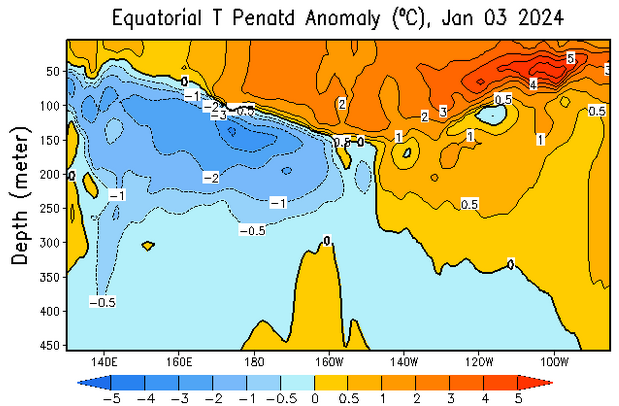
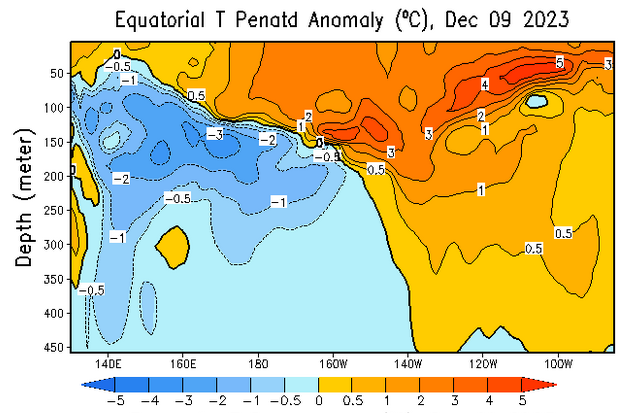


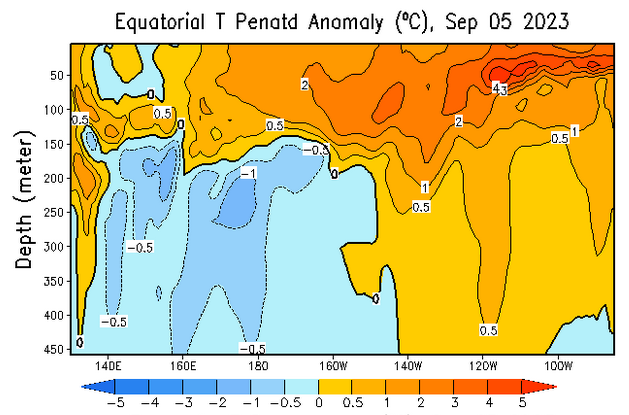
| There is a lot of warm water on the surface and below it. But the Indo-Pacific Warm Pool is pretty much spent. This raises some questions in my mind. |
Another Kelvin Wave will maintain or increase the Nino 3.4 Index at least in the short term. But there does not appear to be a subsequent Kelvin Wave to maintain this El Nino.
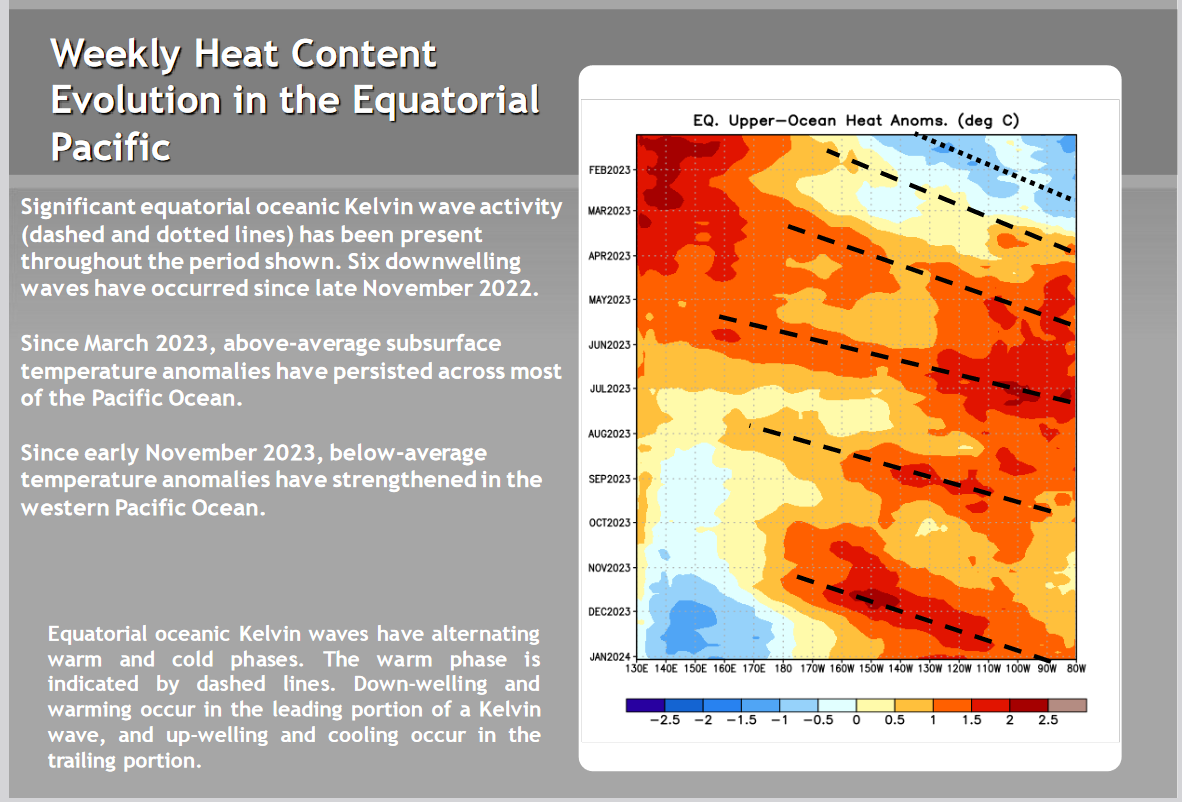
Is the response of the atmosphere sufficient to sustain an El Nino?
| The recent rise in the SOI may mean the atmosphere is not fully responding to the warmer sea surface temperatures. That is not talked about very much. The SOI is now solidly in ENSO Neutral territory. |
We are including the Emily Becker Article this week.

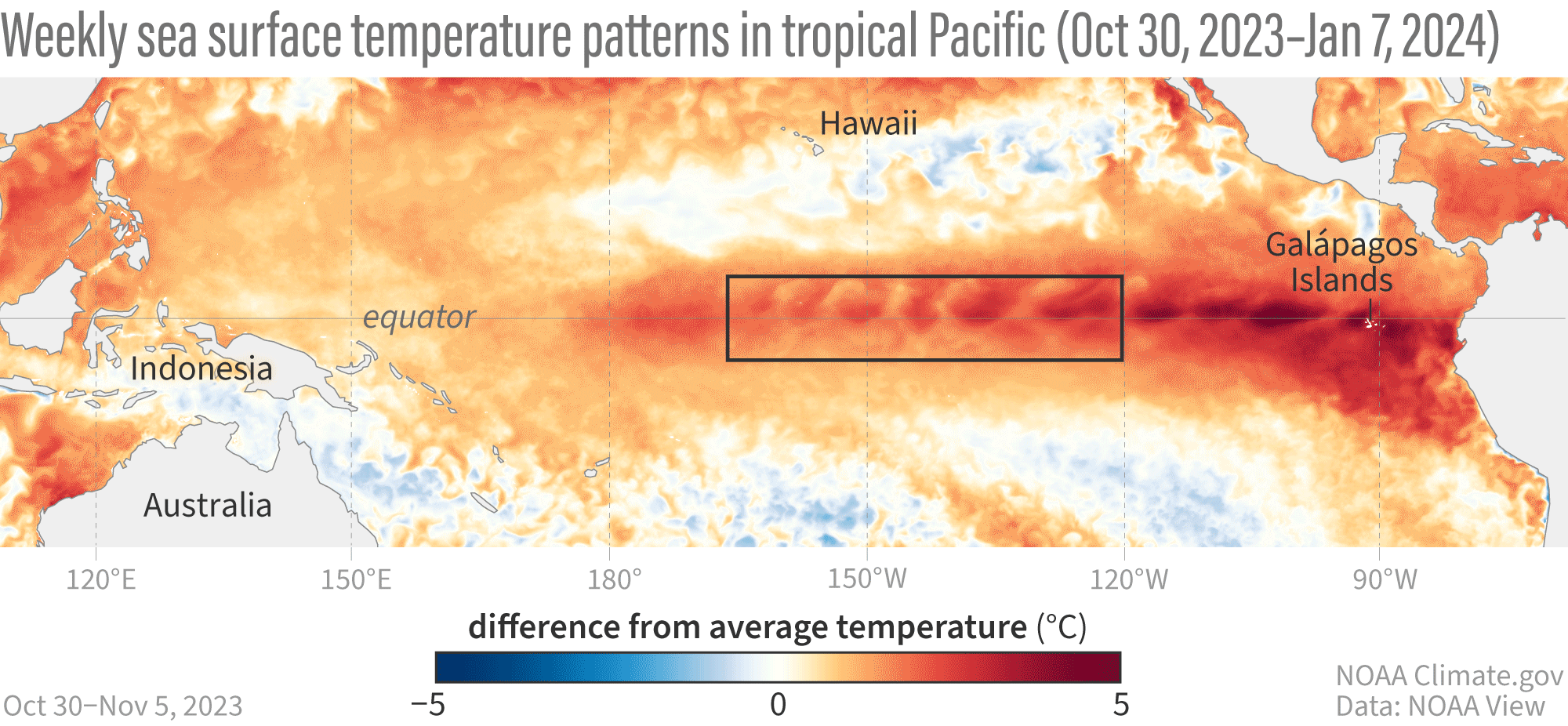
| This animation shows the Modoki forming. I do not recall that Emily Becker refers to this as a Modoki in her article. |
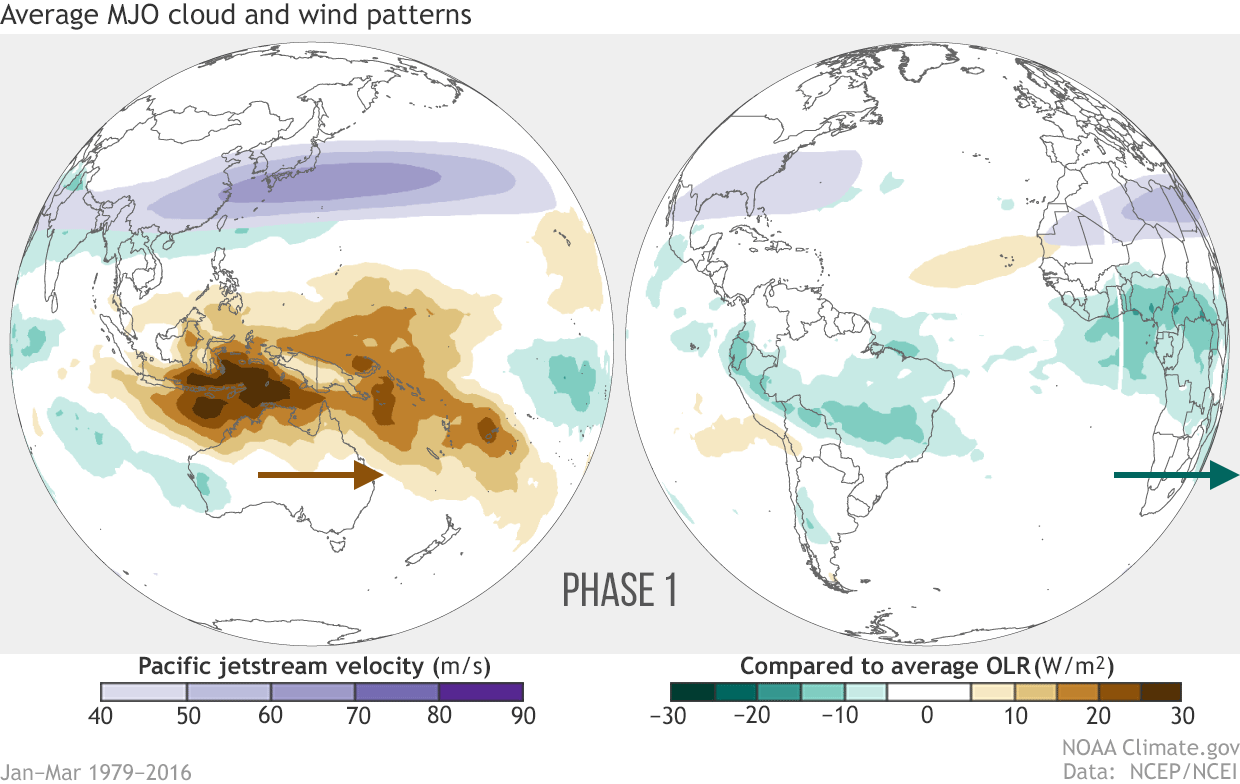
| This excellent animation shows the typical impact of the MJO. There is a lot of information in the Emily Becker Blog and well worth reading in full. |
| I hope you found this article interesting and useful. |

